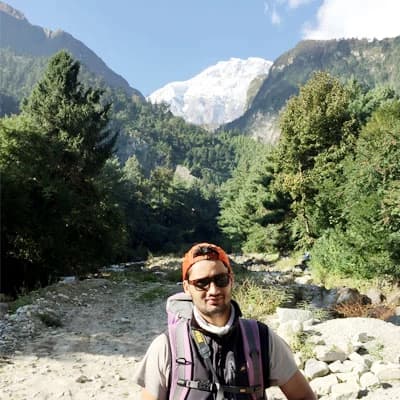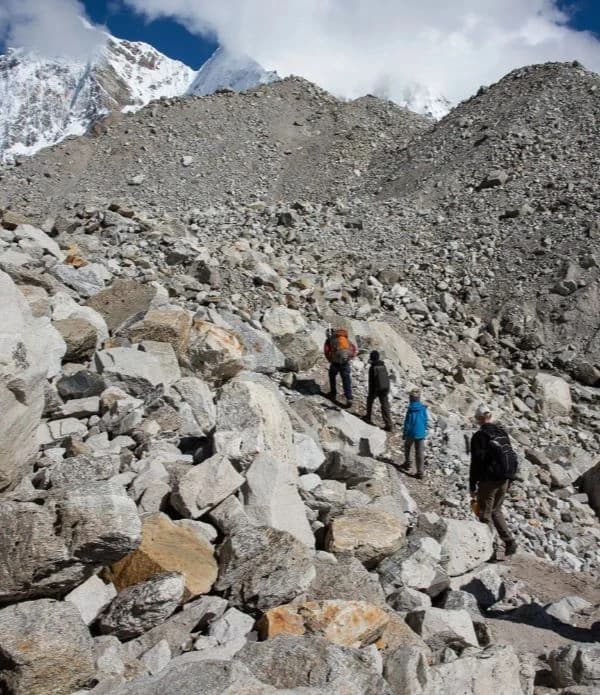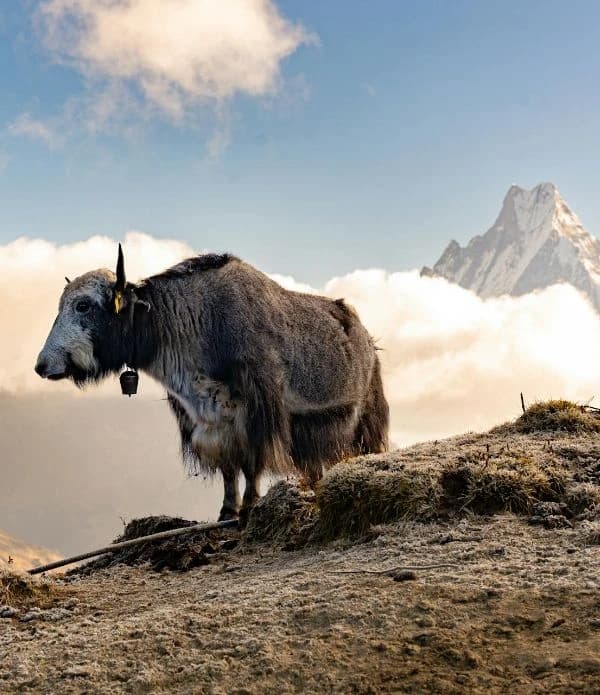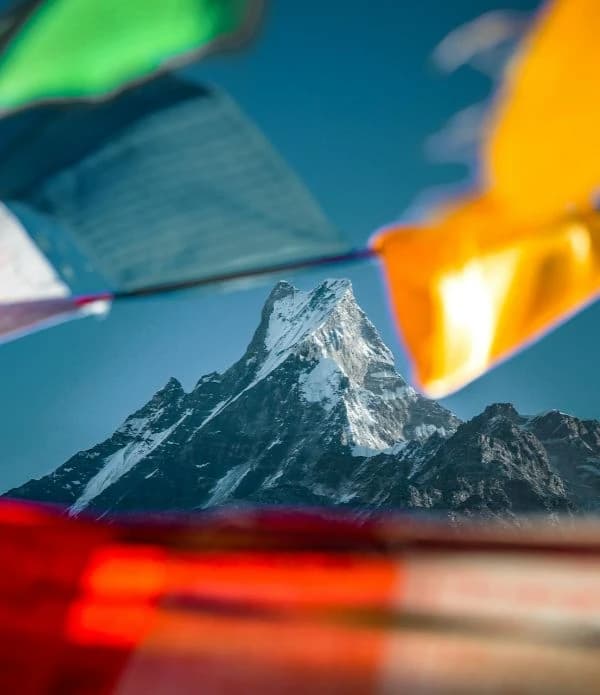Preparing for the Everest Three Passes Trek demands serious physical and mental readiness. Covering rugged terrain for nearly 20 days, with 8–10 hours of trekking daily, this adventure pushes your endurance to the limits. High-altitude climbs, steep ascents, and unpredictable weather make it a true test of stamina and resilience.
How to Prepare for the Everest Three Passes Trek?
The route takes you through three challenging mountain passes—Kongma La, Cho La, and Renjo La—each rising above 5,000 meters, demanding strength, acclimatization, and determination. Whether you are an experienced trekker or taking on your first long-haul expedition, proper preparation is the key to completing this challenging route with confidence.
Every aspect of your preparation, from endurance training to gear selection and altitude acclimatization, plays a crucial role in determining how well you handle this ultimate Himalayan adventure. To tackle these challenges effectively, start preparing at least 2–3 months in advance, focusing not just on physical fitness but also on mental resilience, altitude adaptation, proper nutrition, and well-tested gear.
Here's how to train, pack, and plan for one of the most demanding multi-day treks in the Everest region.
Physical Fitness

For the Everest Three Passes Trek, physical preparation is crucial to ensure you’re ready for the rigorous demands of the journey. While endurance and stamina are key for long days of trekking, building full-body strength will help you manage uneven terrain, challenging ascents, and long hours on the trail.
A well-rounded fitness routine focusing on key muscle groups like legs, core, and upper body will prepare you to face the demanding nature of the trek. By building endurance and full-body strength, trekkers will be better equipped to tackle the ascents, descents, and rocky paths of the Everest region.
Leg Strength and Endurance
Your legs will do the most work during the trek, so it’s vital to strengthen them. The steep climbs and descents require endurance as well as the strength to power through challenging terrain. To build leg strength:
Squats: A fundamental exercise for building overall leg strength. Aim for 3 sets of 12-15 reps.
Lunges: Great for targeting quads, hamstrings, and glutes. Do 3 sets of 10 reps per leg.
Step-Ups: Find a high step or platform. This mimics the uphill movement and helps build strength for steep ascents. Perform 3 sets of 10-12 reps per leg.
Calf Raises: Important for strengthening your calves, which will help you with uphill trekking. Do 3 sets of 15-20 reps.
These exercises will help increase leg strength, making it easier to handle long stretches of uphill trekking and the constant strain on your legs during the entire trek.
Core Strength and Stability
A strong core is vital for balance and stability on uneven ground, as well as when carrying a backpack. A solid core supports your spine and helps with posture, reducing the risk of back pain and injury. To build core strength:
Planks: Hold for 30-60 seconds to strengthen your abdominals, obliques, and lower back.
Russian Twists: This exercise targets the obliques and improves rotational stability. Do 3 sets of 15-20 reps per side.
Leg Raises: A great move for the lower abs, helping improve core stability. Aim for 3 sets of 10-15 reps.
Mountain Climbers: Incorporating this into your workout helps with endurance while also engaging the core. Try 3 sets of 20 reps.
These exercises will improve your balance and stability, which is especially important when traversing rocky terrain and crossing narrow paths.
Upper Body Strength
While your legs and core are the primary focus, a strong upper body will also play a significant role. Trekking with a loaded backpack requires shoulder, arm, and back strength while trekking poles require grip and upper body stability. To strengthen your upper body:
Push-Ups: Push-ups are a great overall exercise for the chest, shoulders, and triceps. Perform 3 sets of 10-15 reps.
Pull-Ups or Chin-Ups: These exercises are great for building upper body strength, particularly for your back and arms. Aim for 3 sets of 5-10 reps.
Dumbbell Rows: Strengthen your upper back and shoulders with 3 sets of 12-15 reps.
Shoulder Presses: These will build strength in the shoulders and arms, aiding in carrying your pack and using trekking poles. Do 3 sets of 12 reps.

A well-developed upper body will provide better balance, reduce fatigue from carrying a backpack, and help you feel more stable when using trekking poles.
Building Stamina and Endurance
To prepare for long days of trekking, gradually increase your stamina by incorporating longer hikes into your training. This will allow your body to adjust to prolonged physical exertion and carry a pack without exhaustion. Aim to do at least one long hike per week, progressively increasing the distance and elevation.
In addition to hiking, include interval training in your routine. This involves alternating between short bursts of high-intensity effort and recovery periods. It helps simulate the varying intensity levels you’ll encounter on the trek, such as steep ascents followed by flatter sections. Interval training will improve cardiovascular endurance and stamina, which are essential for handling long days of trekking at varying intensities.
Mental Preparation
The Everest Three Passes Trek is as much a mental challenge as it is a physical one. While the demanding terrain and long hours of trekking each day can test your physical endurance, it’s the mental fortitude that will carry you through the more difficult moments.
This trek is meant for experienced trekkers who are looking for a serious challenge. The true mental test comes as you approach the high passes, and there’s no turning back. Once you begin the ascent to a pass, you must press on and complete it, which makes mental preparation an essential part of your training.
To prepare for this, it’s essential to build a mindset that can handle the pressure and fatigue. One way to do this is by watching videos or reading books from trekkers who have completed the Everest Three Passes Trek. These resources provide insight into the challenges you’ll face, such as dealing with exhaustion, managing physical discomfort, and pushing through moments of doubt. Knowing what to expect allows you to mentally prepare for these moments and develop strategies to overcome them.

Researching the trail itself and understanding the different passes, the terrain, and possible difficulties will also help you visualize the journey and mentally prepare for it.
Mental preparation isn’t just about pushing through obstacles but also about embracing the entire journey. Without the right mindset, trekkers may find themselves merely struggling to complete the trek, missing out on the beauty and rewards along the way.
While the sense of accomplishment from finishing such a challenging trek is immense, it’s the breathtaking Himalayan views, the satisfaction of crossing each pass, and the rich Sherpa culture that make the journey truly unforgettable.
In the end, mental preparation for the Everest Three Passes Trek is about resilience and understanding that you’ll face obstacles, but also recognizing that the journey itself is just as important as the destination. Enjoy the trek, embrace the challenges, and remember that each step forward is a step closer to achieving something truly extraordinary.
Choose and Prepare the Right Trekking Gear
The proper preparation of your trekking gear is just as crucial as selecting the right equipment. Simply buying high-quality gear isn’t enough; how you prepare and test it before the trek can significantly impact your comfort and overall experience.
Here are some key preparation tips for your gear to ensure you're ready for the challenges of the Everest Three Passes Trek.
For a detailed packing list of essential trekking gear, check out our separate blog on the Everest Three Passes Trek Packing List.
Trekking Boots
One of the most critical pieces of gear is your trekking boots. If you decide to wear a new pair of boots without breaking them in first, you’ll be setting yourself up for blisters, sore feet, and general discomfort.
Trekking for hours each day with new boots can cause friction, and once you’re on the trail, it’s too late to make changes. Start breaking in your boots well ahead of the trek. Wear them on shorter hikes, gradually increasing the distance and the terrain to help mold them to your feet.
This will help reduce the risk of blisters and ensure that your boots feel like an extension of you by the time you hit the Everest Three Passes trail.
Backpack Fit and Load
Your backpack is your lifeline throughout the trek. It's not just about choosing a high-quality pack; it’s equally important to make sure it fits properly and that you’ve packed it wisely.
A poorly fitted backpack can cause back and shoulder strain, leading to unnecessary fatigue during your long days of trekking. Test your backpack by carrying it on practice hikes with a similar load to what you'll be taking on the trek.
Ensure the straps are adjusted so that the pack sits comfortably on your hips and shoulders, with the weight evenly distributed. When packing, place heavier items, such as water bottles and gear, centered and close to your back to maintain balance. Lighter items should go toward the top, while frequently used essentials like snacks, maps, or a rain jacket should be easily accessible in outer pockets. Getting this right will ensure that your pack works for you, not against you.

Layering and Clothing Comfort
The weather on the Everest Three Passes Trek can change rapidly, so layering your clothing is essential. However, layering is about more than just packing multiple layers; instead, it’s about ensuring that each layer fits properly and functions as it should.
Poorly fitted clothes can cause chafing, overheating, or leave you feeling cold, which will affect your trekking experience.
To prepare, wear your trekking clothes on several test hikes, paying attention to how they fit and how well they work together. Make sure your clothes are breathable, moisture-wicking, and comfortable for long hours of activity.
Also, consider anti-chafing products and make sure your layers allow for flexibility and ease of movement.
Sleeping Gear
Getting enough rest is crucial for maintaining your energy levels on this challenging trek. The quality of your sleeping bag and mat directly affects how well you recover each night. A sleeping bag that doesn’t provide enough warmth or a mat that doesn’t offer comfort can lead to poor sleep and fatigue.
Spend a night camping in your sleeping bag to see how well it keeps you warm and ensure your sleeping mat provides the necessary insulation. If needed, add extra liners or insulation to make sure you're prepared for cold nights in the mountains.
Hydration System
Staying hydrated on the Everest Three Passes Trek is vital for maintaining your energy and performance. Whether you’re using water bottles or a hydration bladder, your hydration system must be functional and easy to use.
Nothing is worse than dealing with a leaky water bottle or a hydration system that’s difficult to refill when you're out on the trail. Test your hydration system during practice hikes to make sure it’s working properly.
Check that your water bottles or bladder don’t leak and that they’re easy to access during your trek. You want a system that’s convenient and reliable so you can stay focused on the journey.
Electronics and Accessories
The last thing you want on your Everest Three Passes trek is to run out of power or find your headlamp isn’t working when the sun goes down.
Ensure all your electronics, including your headlamp, camera, GPS, or any other devices, are fully charged and in good working order. Bring extra batteries or power banks to ensure you don’t run out of power, and double-check your gear before you depart.
A basic first-aid kit should also be packed and checked for completeness, ensuring you're prepared for any unexpected situations.
Preparing For High Altitude

As you ascend in the Everest Three Pass trek, the air becomes thinner, meaning your body gets less oxygen with each breath. This can make physical exertion feel much more demanding and increases the risk of altitude-related illnesses, making proper preparation essential.
High altitude presents unique challenges that can affect even the most seasoned trekkers. The reduced oxygen levels can lead to acute mountain sickness (AMS), fatigue, dizziness, headaches, nausea, and shortness of breath.
Unlike other treks where you might have exit points, the Everest Three Passes Trek requires trekkers to move forward, as turning back isn’t always a viable option. Therefore, proper altitude preparation is non-negotiable, as it helps your body adapt to the thin air and reduces the risk of altitude sickness.
Train Your Lungs and Stamina
Since the air at high altitudes has lower oxygen levels, your lungs will need to work harder. If you’re a smoker, quitting well in advance of the trek is highly recommended, as strong lung capacity is crucial for adapting to the thin air.
Cardiovascular exercises like running, cycling, and swimming can help improve oxygen efficiency. Breathing exercises, such as diaphragmatic breathing and pranayama, can also enhance lung capacity and endurance.
Acclimatization and Slow Ascent
One of the best ways to prepare for altitude is to allow your body time to adjust. While on the trek, it’s crucial to ascend gradually and follow the "climb high, sleep low" principle, meaning you trek to a higher elevation during the day but descend slightly to sleep at a lower altitude. Acclimatization days, where you stay at one elevation for a day or two, help your body adapt.
High-Altitude Pre-Trek Hikes
If possible, train at high elevations before your trek. If you live near mountains, practice hiking at elevations above 3,000 meters (9,800 feet) to experience how your body reacts to reduced oxygen.
If high-altitude training isn't possible, consider hiking with a weighted backpack to simulate the endurance required for the trek.


.webp&w=1200&q=75&dpl=dpl_5no2mbdoNHZofbQzNp4xwNy1a21g)
.webp&w=1200&q=75&dpl=dpl_5no2mbdoNHZofbQzNp4xwNy1a21g)


